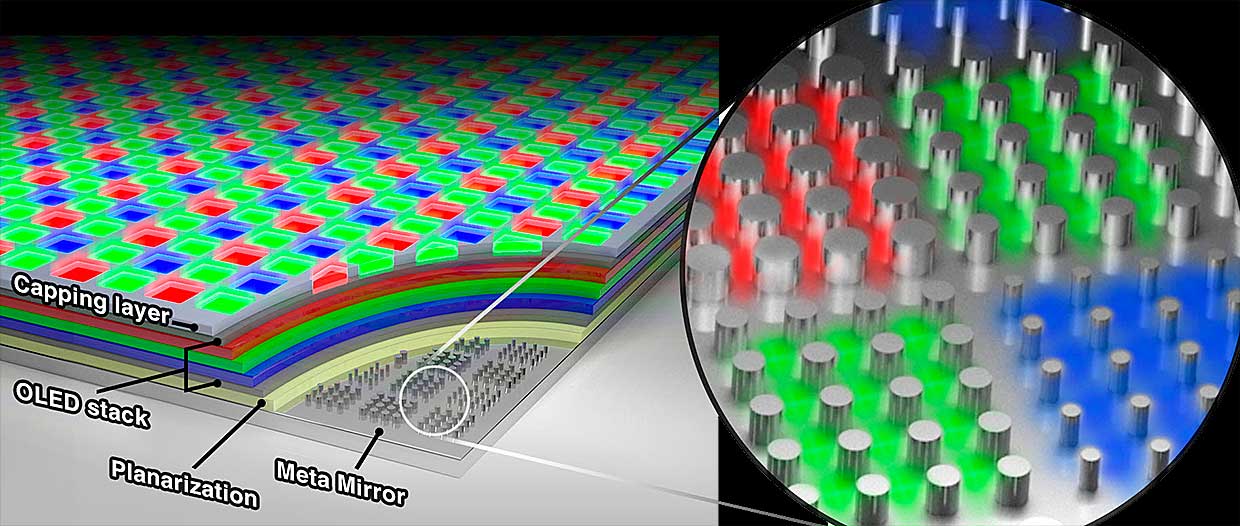
Samsung Developing Super Pixel Density OLED Displays
October 27, 2020 by Dave Haynes
This is not coming to a digital signage job anytime soon, but Samsung is deep into R&D on a new kind of OLED display that has as many as 10,000 light pixels per inch.
That’s JUST a bit tighter in pixel density than a typical OLED commercial display or TV, which will typically have a pixel density of about 100 to 200 pixels per inch (PPI). A smartphone using an OLED display might have 400 to 500 PPI.
The thinking is much more about virtual reality headsets and augmented reality applications, but Samsung scientists also indicated in a research paper – relayed via the engineering journal IEEE Spectrum – that it is looking at “full-sized” displays.
I will not go into the details of how because it is over my head, but, briefly, it uses reflective films that do a better job than the existing OLED color filter technology.
Explains IEEE Spectrum:
The new display uses OLED films to emit white light between two reflective layers, one of which is made of a silver film, whereas the other is a “metasurface,” or forest of microscopic pillars each spaced less than a wavelength of light apart. Square clusters of these 80-nanometer-high, 100-nanometer-wide silver pillars served as pixels each roughly 2.4 microns wide, or slightly less than 1/10,000th of an inch.
Very high pixel densities are also being explored and realized by companies using microLED technology, again primarily with the primary idea of smaller displays.
The issue with these smaller displays is eliminating what is described as the screen door effect – the result of a relatively low pixel density that allows viewers to see the gaps between pixels immediately in front of their eyes. It’s the headset version of what happens when a viewer walks up close to a fine pitch display that looks amazing at 10 feet, the pixel gaps grow apparent as the viewer gets up close.
We’ve seen with super-tight pitch SMD displays that goes away, and the same with microLEDs like Sony’s Crystal LED and Samsung’s The Wall. There are microLED companies that are also developing prototypes that also have 10K PPI and have gone as dense at 30K.
There would be a huge number of technical, manufacturing and quality control issues to overcome before a full-sized, even TV-sized OLED with this pixel density ever came out. And there would be a reasonable argument to be made that even if you could do it, why?
There might be some medical imaging and research applications, but even existing OLEDs at their “paltry” pixel density look pretty great for most jobs.
Still … something to watch.



Are they going to have the smaller versions of this screen type of technology?
I am thinking 17”, 21”, 25”, 31”?